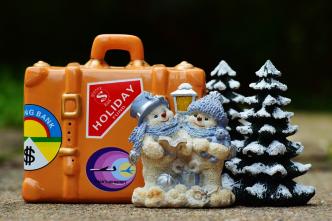Advent calendar 2015: week four Inspire article
Welcome to the Science in School Advent calendar for 2015.

courtesy of Alexas_fotos;
image source: Pixabay.
This is our last Advent post for this year, before we all travel back to our families and loved ones to celebrate. This time of year usually sees a big migration of humans on the roads using all sorts of transportation means, the most common being the car. But do you actually know what science underlies movement in cars? And what the future holds in that area? Abc.net and NOVA teachers have nice activities on those topics.
Future scientific developments might take us much further than just fuel-efficient cars: we might be able to travel in time one day. Science-fiction? Well, find out for yourself with an interesting classroom activity. Things that once seemed totally impossible are now true, so let’s dream… For the moment, humans can travel into space with rockets (some that are easy to create), and even live on a space station for months. We have also designed space ships that can go much further than that, and land on a comet hundreds of thousands of kilometers away to explore its surface. One-hundred years ago this sounded crazy, so perhaps our great-grand children will be able to travel in the fourth dimension, and celebrate Christmas as many times as they wish every year?
Coming back to the present, humans are not the only species to travel: many animals do, or more precisely, some migrate in large herds, covering incredibly long distances. Observing them is a great travel destination for humans. On a smaller scale, the proteins in our cells move around to perform various tasks.
Traveling and moving is integral to many life-forms. But let’s not forget that having a home and enjoying it also requires us to put down roots somewhere and stay still .





